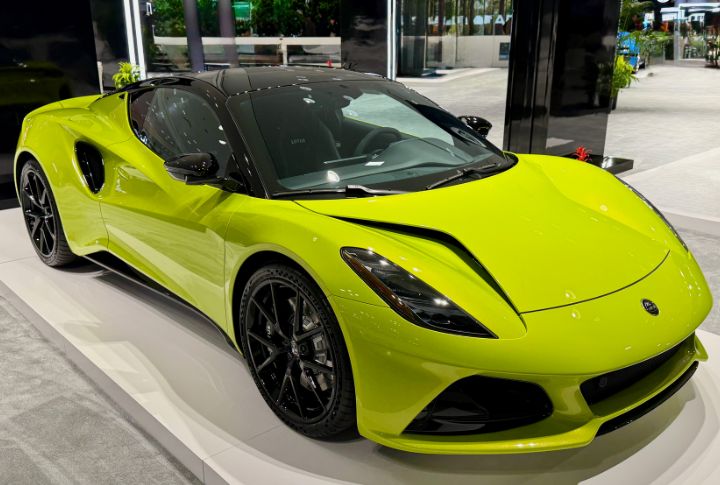
Do you have any idea what a 400-horsepower, manual-shift car can do?
In the right (and experienced) hands, that’s a 0–60 sprint in around four seconds and quarter-mile runs in the 12-second range. On the track, it’s raw speed with control.
Downshifts help slow the car without frying the brakes, while precise gear choices keep the engine in its sweet spot. That’s why racers hold on to manuals, and why their last survivors in 2025 still matter.
Let’s hit the red line on this story. But before we get into the last 400+ horsepower pack…
What Horsepower Really Means
Horsepower is the computation of how quickly an engine can do work. In simple terms, it’s a way of showing how much force your car’s engine can push out over time. The number is derived from torque (the twisting force) multiplied by the engine’s rotational speed (RPM). The more torque at high RPMs, the more horsepower you get.
In today’s performance cars, that number is enormous. The highest production horsepower ever offered comes from the 2025 Lucid Air Sapphire, which uses a triple-motor setup to produce a staggering 1,234 HP.
On the gasoline side, the Dodge Challenger SRT Demon 170 holds the crown with 1,025 HP straight from the factory. Both prove just how far engineering has come from the days when 300 HP was a dream.
So what makes 400 HP in a manual car feel different from that in an automatic?
With a manual, you decide when and how that power hits the wheels. Downshifting into a corner, holding a gear a little longer, or feathering the clutch lets you shape how the car accelerates.
An automatic can shift faster, sure, but it chooses efficiency and smoothness, sometimes dulling the raw surge you’d feel with your timing.
In short, 400 HP in a manual feels like a conversation—you’re part of the action—while in an automatic, it’s more like being along for the ride.
Now, let’s take a look at the pack of manual cars with 400+ horsepower.
Cadillac Blackwing Sedans: 472 And 668 HP
Cadillac’s Blackwing twins aren’t just fast—they’re ferociously controlled. The CT4‑V Blackwing doles out 472 hp from its twin‑turbo V6 and rockets from 0 to 60 in just 3.9 seconds. The price? The 2025 version starts at approximately $62,195, and the 2026 version at roughly $62,700.
Then, the CT5‑V Blackwing has a supercharged 6.2‑liter V8 smashing out 668 hp and a thunderous 659 lb‑ft of torque that hits 0–60 in around 3.4 seconds. Add a six‑speed manual, and you’ve got rare swagger in a luxury sedan that costs you $95,595 (2025) and $97,600 (2026).
Ford Mustang GT: ~486 HP
This 2025 car, which costs between $33,915 and $69,870, remains the last true V‑8 pony car you can row yourself. Its 5.0‑liter Coyote V8 pumps about 486 hp and 418 lb‑ft of torque through a six‑speed manual, and this sends you to 60 mph in around 4.3 seconds with a top speed near 155 mph.And here’s the kicker—about a third of buyers still opt for the stick, hitting nearly 50/50 on the Dark Horse edition. That’s loyalty and performance you don’t get from an automatic.
Nissan Z: 400 HP
Starting at $42,970, the new Nissan Z brings vintage emotion into modern times. Under its hood: a 3.0‑liter twin‑turbo V6 with 400 hp and 350 lb‑ft of torque, paired with a six‑speed manual and rev‑matching tech.
It hits 0–60 in roughly 4.3 seconds and keeps that classic RWD setup that made its ancestors rally icons. It’s modern muscle that remembers its roots—and refuses to let them go.
Lotus Emira V6: 400 HP
Lotus built its reputation on lightweight cars that corner like nothing else, and the Emira carries that legacy into its 2025 model, which costs approximately $102,250, according to Car & Driver. The engine is a supercharged 3.5-liter V6 producing 400 hp and 310 lb-ft of torque. It sprints from 0–60 in about 4.2 seconds and stretches to a 180 mph top speed.Agile, precise, and deeply connected, the Emira is more than quick. It’s symbolic. As the last gasoline-powered Lotus, every manual version instantly holds collectible value.
Final Thought
From Cadillac’s fire-breathing sedans to Lotus’s scalpel-like coupe, each of these cars gives you horsepower you steer, not just feel. These beauties are reminders that driving used to be a two-way dialogue between hand and throttle.
Want to feel alive? These are the last of their kind, with manuals and souls worth savoring.
